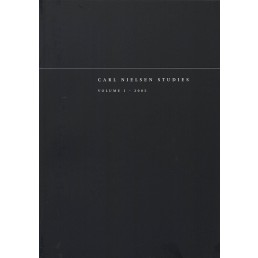Carl Nielsen and the Current of Vitalism in Art
DOI:
https://doi.org/10.7146/cns.v4i0.27750Abstract
The great accomplishment of Jorgen I. Jensen in his biography Carl Nielsen – Danskeren (Nielsen – The Dane) was to point to the importance of symbolism to Nielsen’s development especially in the 1890s. That provided a new approach to contextualising features by Nielsen which otherwise had appeared to be particular to him. Vitalism on the other hand is a current in art which has not been spoken much of in the latest 60 years, not least because it became part of fascist aesthetics in the 1930s. One could try to verify the idea that, as in the case of J.F. Willumsen, there might be features which, though, barely explainable as the heritage of symbolism, could make sense if one acknowledges vitalism as a current running through Nielsen’s oeuvre. With the large exhibition Livslyst (Passion of Life) in 2008, Danish art history has thrown new light on this current, and an essay in the catalogue is the first attempt to make a reading of Nielsen in this context. Symbolism, itself a child of modernity, was a rebellion against the rationalism of modern Scandinavian literature and art since the 1870s. After 1900, though, a symbolist interpretation becomes less convincing. Here we find an engagement in the arabesque with affi nity to Jugendstil which acts as transition to an engagement in the Greek, youth, health and vitality, fully in keeping with the views of vitalism. Tracing this engagement might help understand some aspects of Nielsen’s music and aesthetics, though he never became a one hundred per cent vitalist artist. He was all his life an artist with seismographic sensibility to new currents, to which he responded without giving himself totally to them.Downloads
Published
2009-04-10
How to Cite
Fjeldsøe, M. (2009). Carl Nielsen and the Current of Vitalism in Art. Carl Nielsen Studies, 4. https://doi.org/10.7146/cns.v4i0.27750
Issue
Section
Articles
License
- Authors retain copyright and grant the journal right of first publication with the work simultaneously licensed under a Creative Commons Attribution License that allows others to share the work with an acknowledgement of the work's authorship and initial publication in this journal.
- Authors are able to enter into separate, additional contractual arrangements for the non-exclusive distribution of the journal's published version of the work (e.g., post it to an institutional repository or publish it in a book), with an acknowledgement of its initial publication in this journal.

